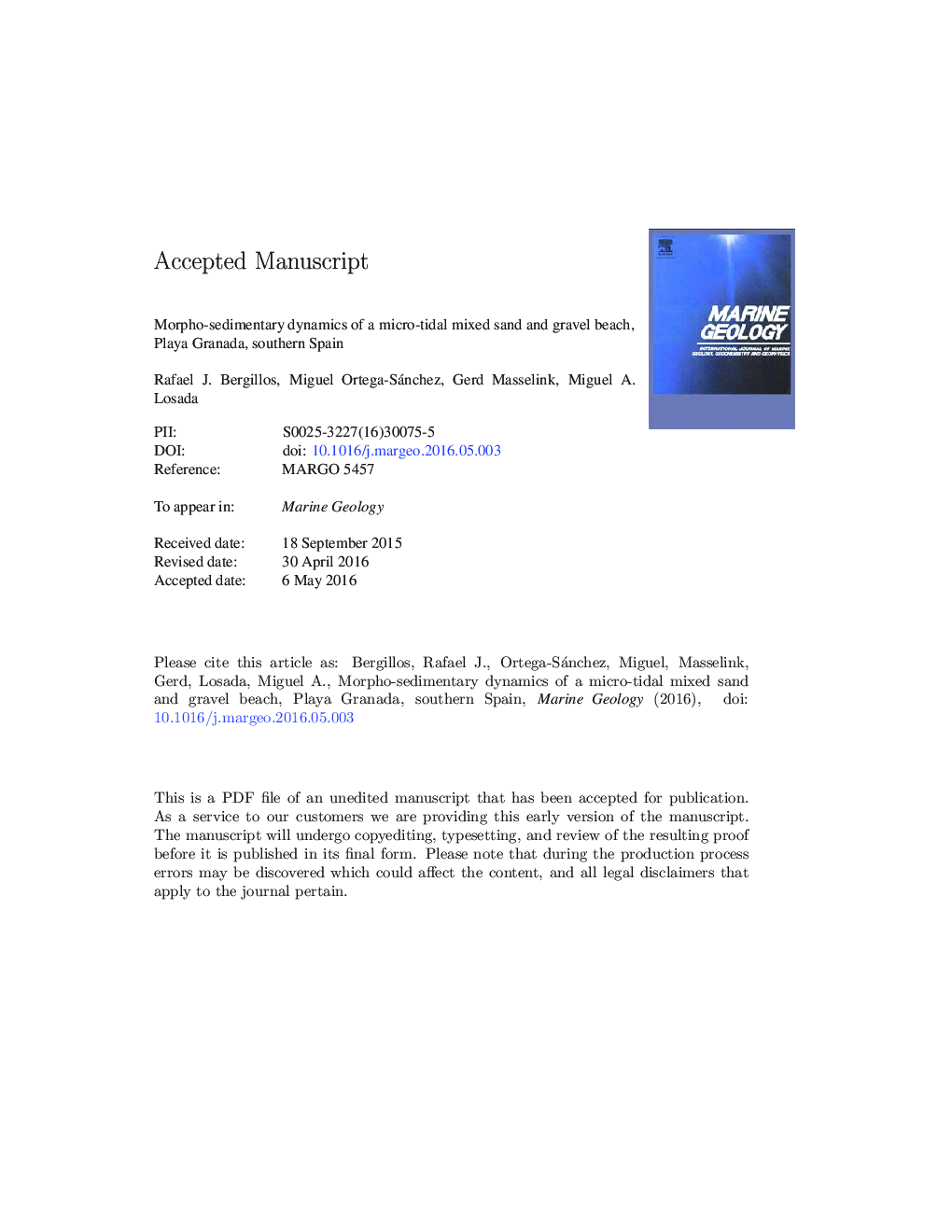| Article ID | Journal | Published Year | Pages | File Type |
|---|---|---|---|---|
| 6441346 | Marine Geology | 2016 | 39 Pages |
Abstract
This paper addresses the changes in the morphology and sedimentology of a micro-tidal mixed sand and gravel beach (Playa Granada, southern Spain) forced by wave and water-level variations, and human intervention through nourishment. Monthly and storm event-driven beach surveys, consisting of topographical measurements and sediment sampling in two selected areas, were carried out over a one-year period. Three prevailing sediment fractions (sand, fine gravel and coarse gravel) and two end-member morphological states of the upper beach profile (convex with multiple berms and concave with a single storm berm) were identified. Between them, several transitional profiles were formed, characterized by developing berms that progressively overlapped, generating sediment variability both across the beach profile and with depth. The results indicate that the total run-up (including water-level) reached during an event represents a more accurate threshold for differentiating between erosional and depositional conditions than wave height. They also suggest that mixed sand and gravel beaches recover faster from storm erosion than sandy beaches. The long-term benefit of the artificial nourishment that took place at the end of the survey period was very limited and this is attributed to the too fine sediment used for the nourishment and its placement too high on the beach. Clearly, nourishment interventions must take into account the natural sediment distribution and the profile shape to avoid rapid losses of the nourished sediment.
Related Topics
Physical Sciences and Engineering
Earth and Planetary Sciences
Geochemistry and Petrology
Authors
Rafael J. Bergillos, Miguel Ortega-Sánchez, Gerd Masselink, Miguel A. Losada,
